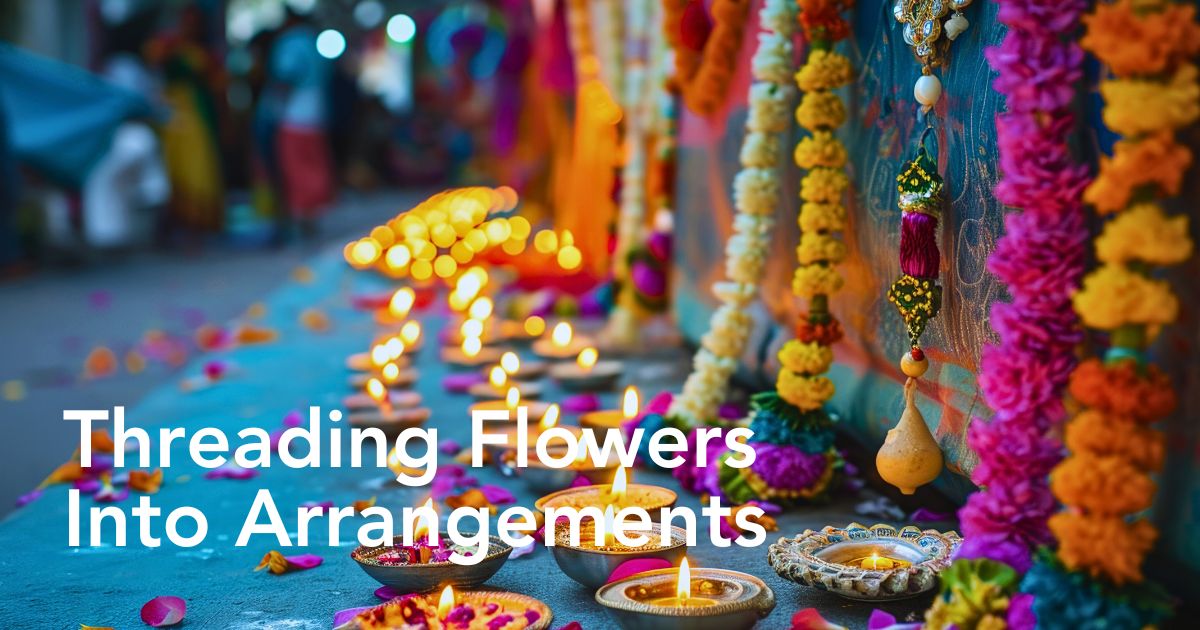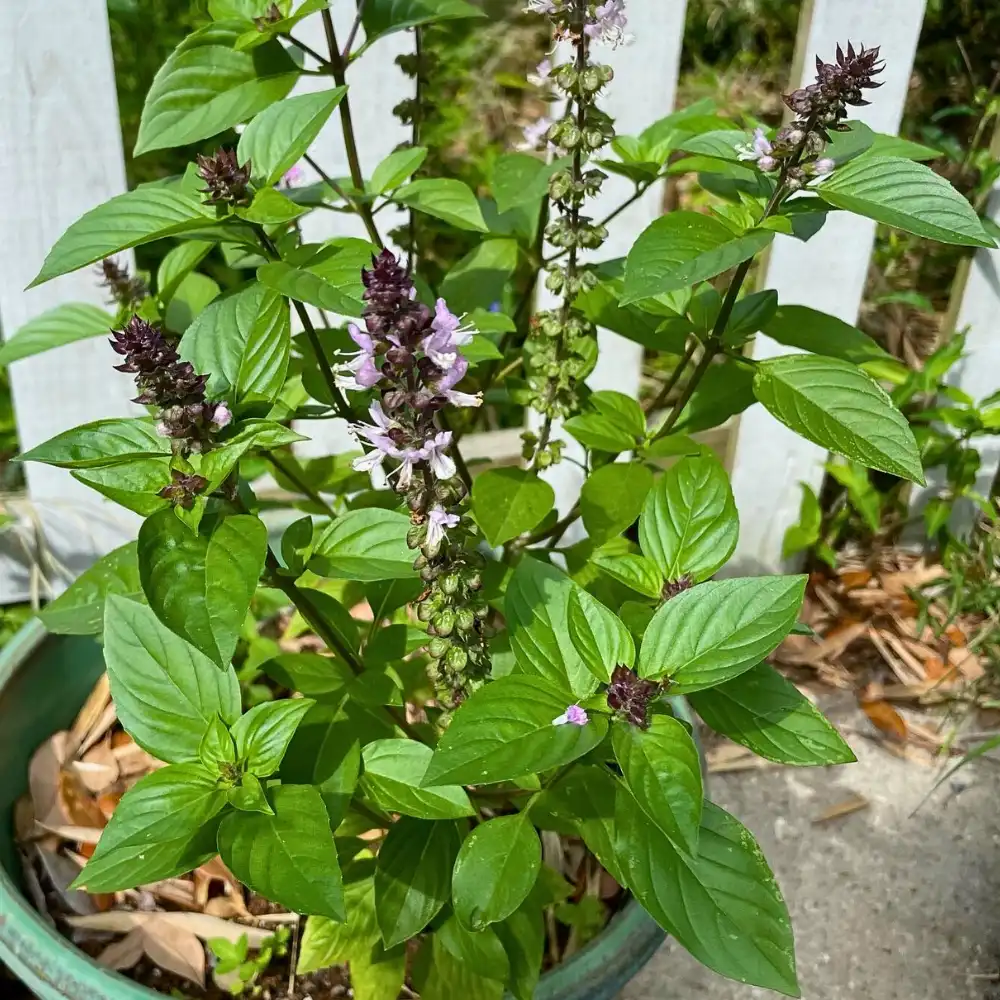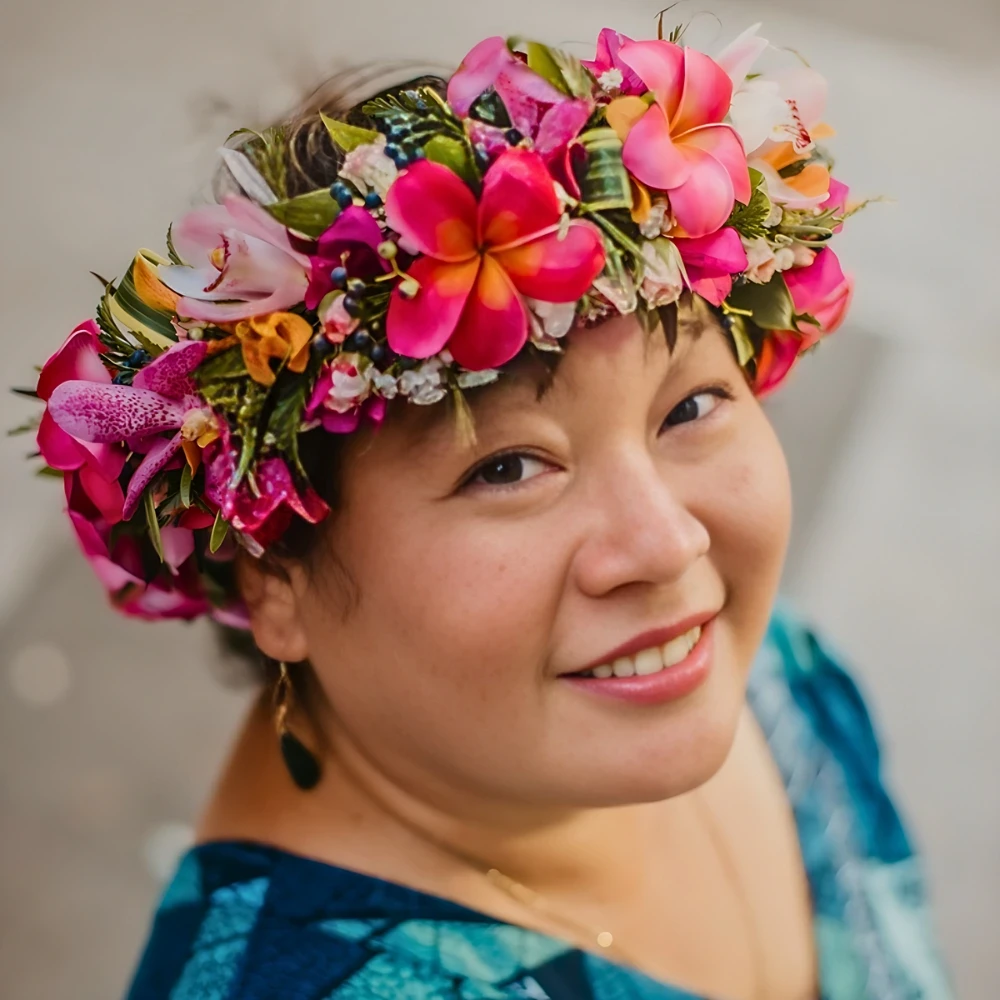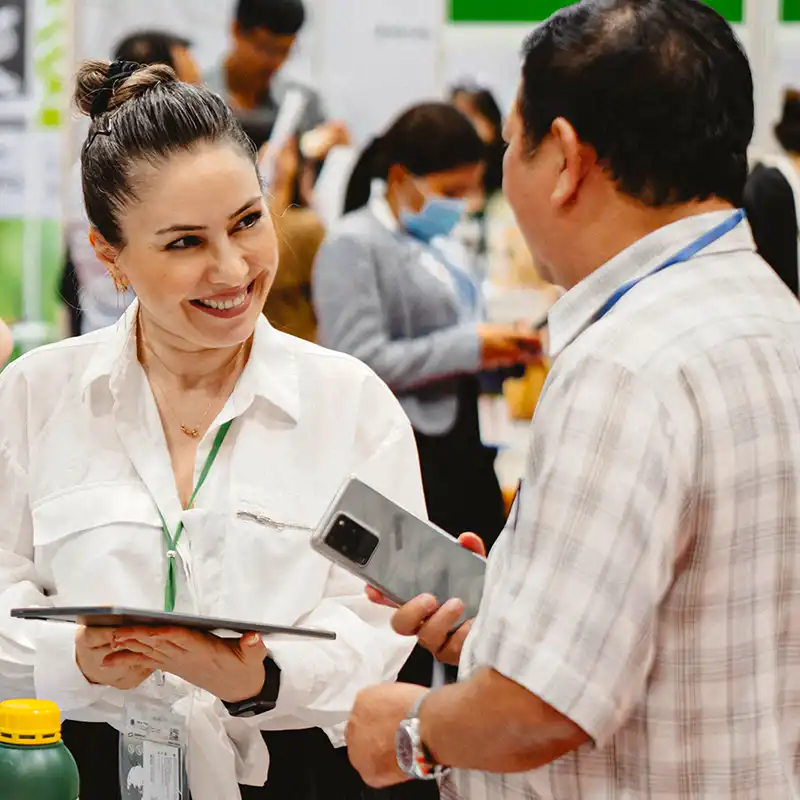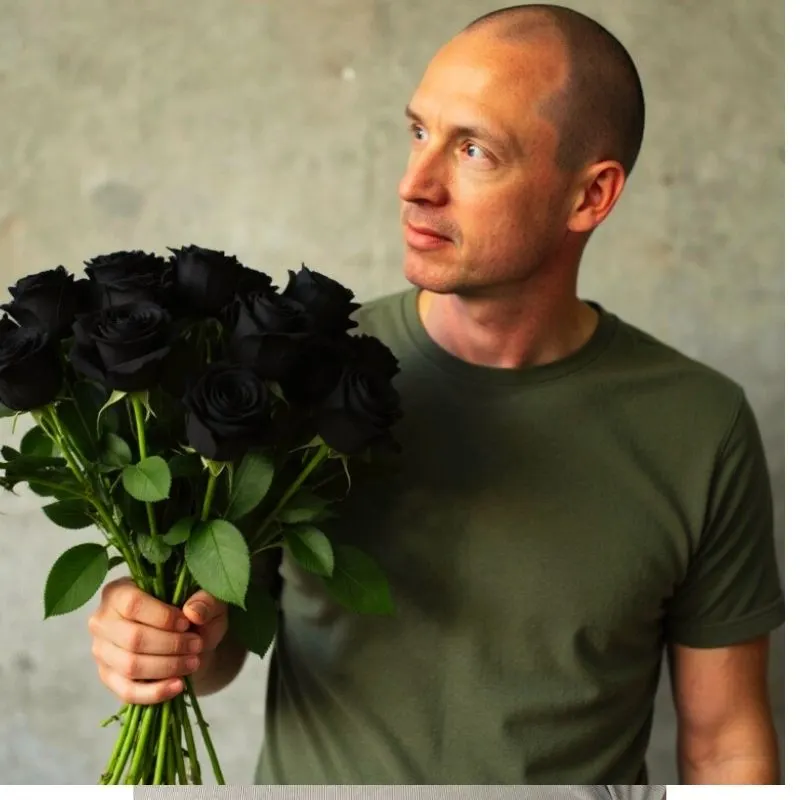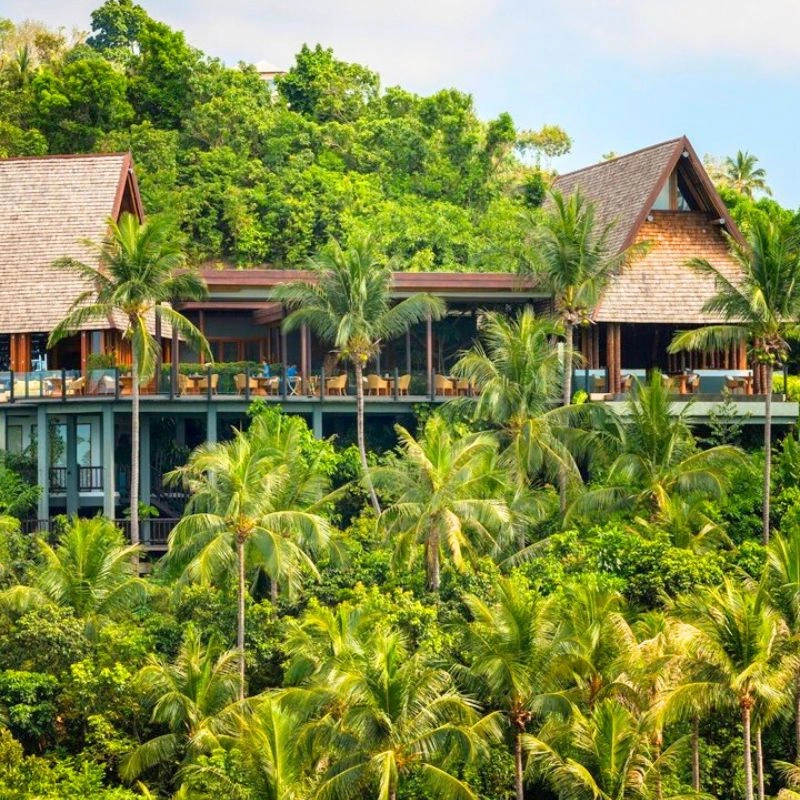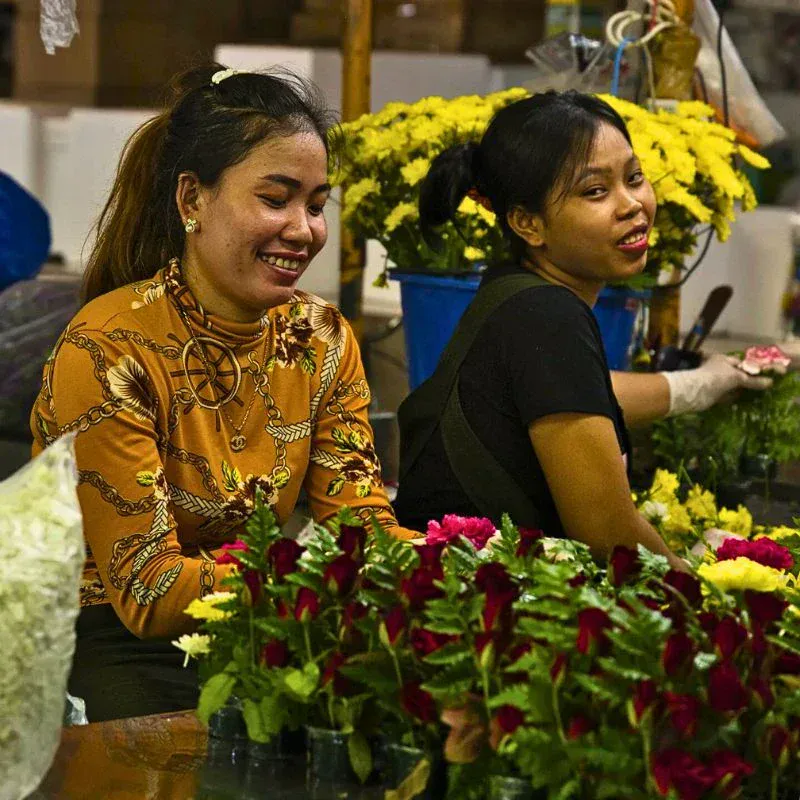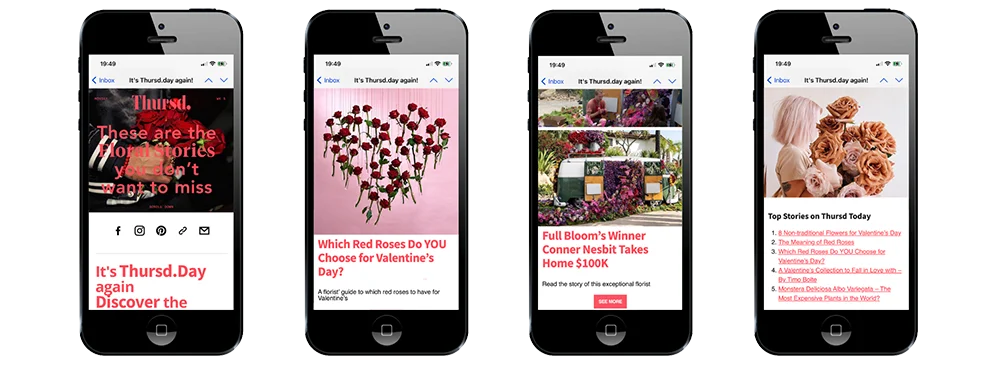Across the world, there are hundreds of floral traditions, with different meanings and symbolisms, and associated with their different contexts. The Thai tradition of making Phuang Malai is one of those that really capture the essence of floral reverence and beauty, quite unlike many others. Phuang Malai, the traditional Thai flower garlands, are delicate strings of carefully selected flowers that are more than just decorative pieces; they carry spiritual meaning and cultural significance that pervade everyday life and sacred ceremonies.
Essentially, these elaborate floral garlands, artistically crafted from some of the most beautiful flowers, act as a kind of link between the earthly and the divine in Thai society. Often seen adorning the necks of revered monks, decorating temple altars, or blessing newlyweds, Phuang Malai embeds a unique blend of artistic craftsmanship and religious devotion in a floral tradition, rich in history, incrusted with meaning, that flourishes in tandem with modernity; a connection between the past and present.
Origins and Historical Significance of These Garlands
Phuang Malai has its origins in Thailand's ancient past, emerging from the marriage of indigenous animistic beliefs and Buddhist practices that arrived from India centuries ago. They were influenced by cultural exchanges with neighboring regions, particularly South India. Scholars often trace their origins to the Tamil word ‘poo maalai,' highlighting the historical connections between the ancient Tamil kingdoms and the early Thai kingdoms through trade and cultural diffusion.
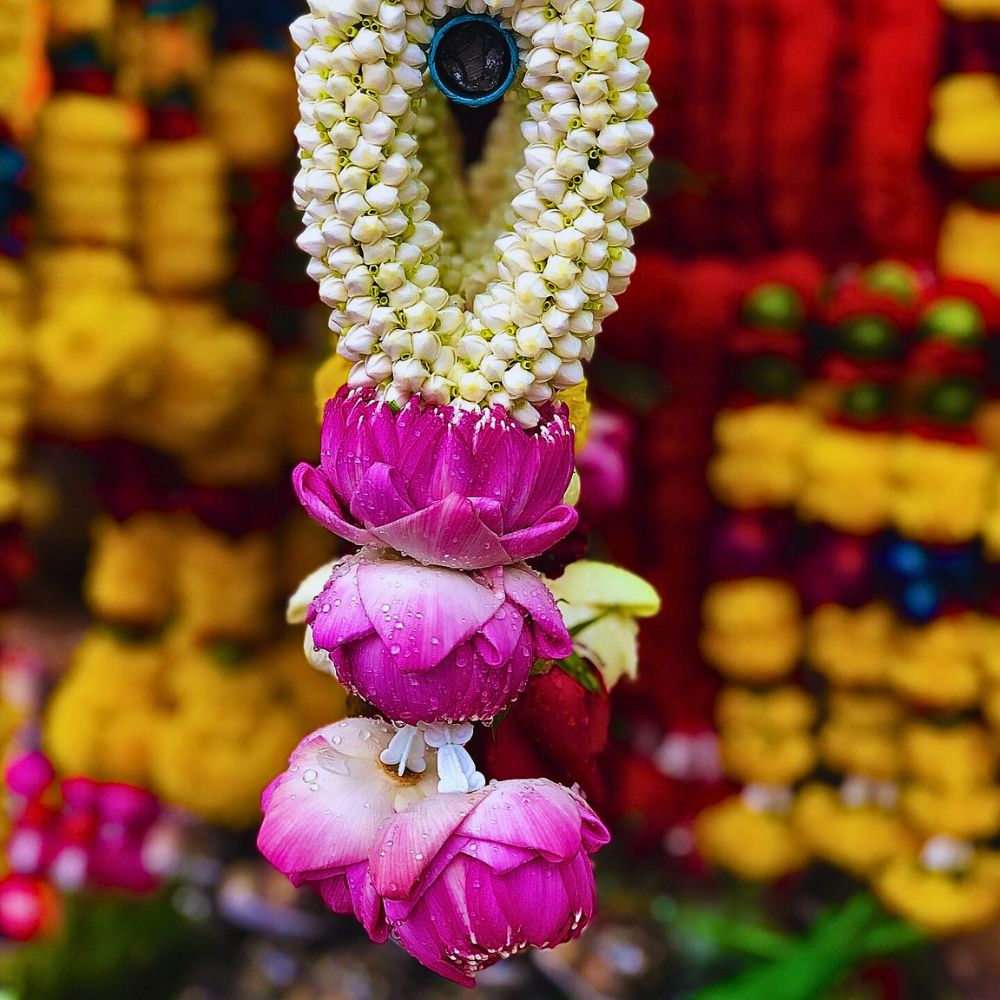
In latter contexts, the term ‘Phuang’ was held to be derived from the Thai word meaning ‘to string’ or ‘to thread,’ while ‘Malai’ refers to a garland or lei. Together, they define the art of stringing flowers into circular or elongated arrangements that typify the cyclical nature of life, death, and rebirth, central to Buddhist philosophy.
Archaeological evidence suggests that floral offerings were already central to pre-Buddhist Thai ceremonies, where flowers were believed to possess spiritual energy capable of appeasing spirits and deities. When Buddhism took hold in the region during the 6th century, these existing practices seamlessly merged with Buddhist concepts of merit-making and devotional offerings. The floral garland art was, therefore, firmly established during the Sukhothai period (13th-15th centuries), closely linked to religious and royal ceremonies.
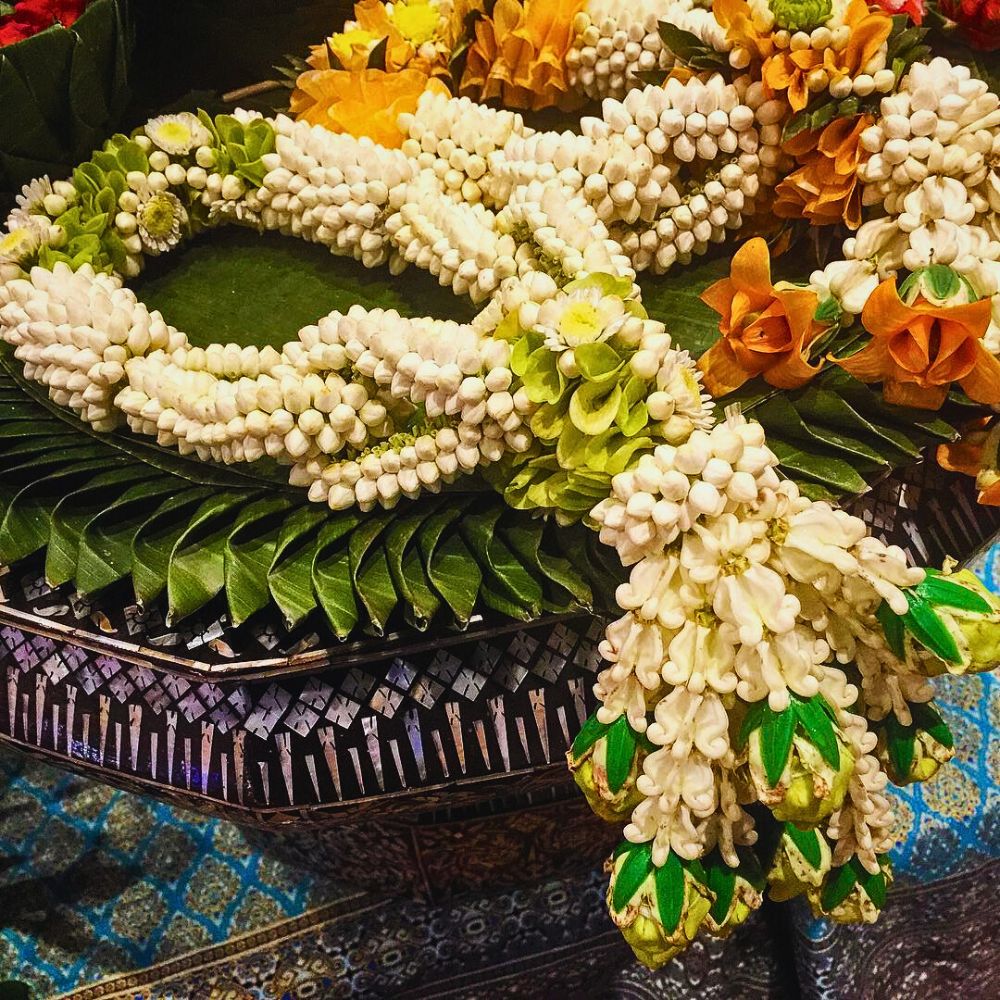
Also, historical records from the Ayutthaya and early Rattanakosin eras document the use of flower garlands in court rituals and temple offerings. During the reign of King Rama V (Chulalongkorn), the craft was refined and promoted to a highly respected art form. Royal patronage encouraged the development of elaborate designs and patterns, with the queen and palace ladies often skilled in their creation. This royal endorsement helped build Phuang Malai’s role as both a cultural emblem and a divine offering.
Later, during the reign of King Narai the Great in the 17th century, the art reached even greater heights, with court records describing these garlands as being so elaborate that they required teams of craftspeople working in shifts to complete them for major ceremonies. These historical precedents established Phuang Malai not just as decorative items but as essential components of Thai spirituality and social expression.
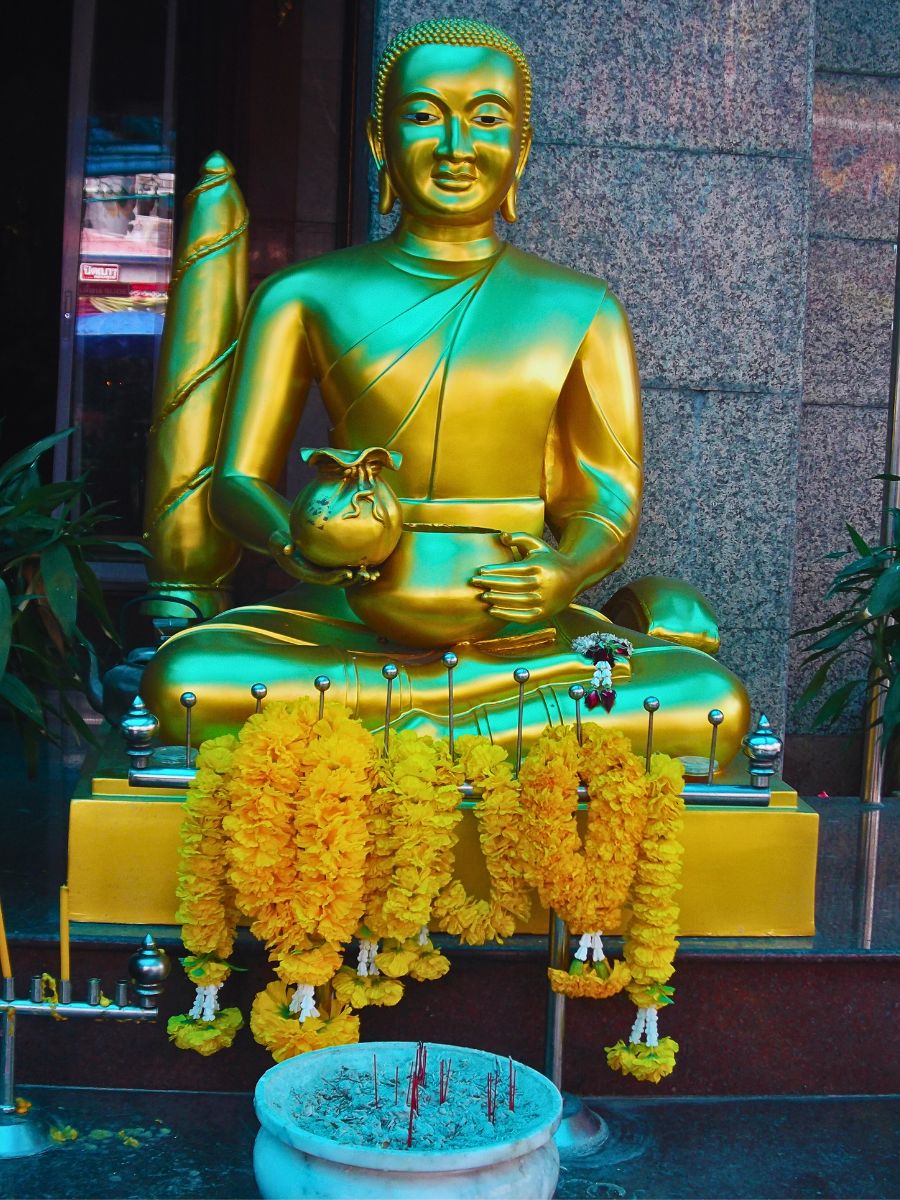
Their Sacred Flowers and Symbolic Meanings
Phuang Malai is not just a string of flowers. It defines a carefully crafted piece of art whose process requires patience, dexterity, and an intimate knowledge of floral symbolism. Traditionally, six main patterns or styles of garlands have been recognized, each with its own unique form and purpose. One of the most beloved patterns is the creature malai, where flowers are assembled to resemble animals like rabbits, squirrels, or gibbons in charming shapes. They are often given as souvenirs during happy occasions like weddings or baby showers, signifying good luck and protection.
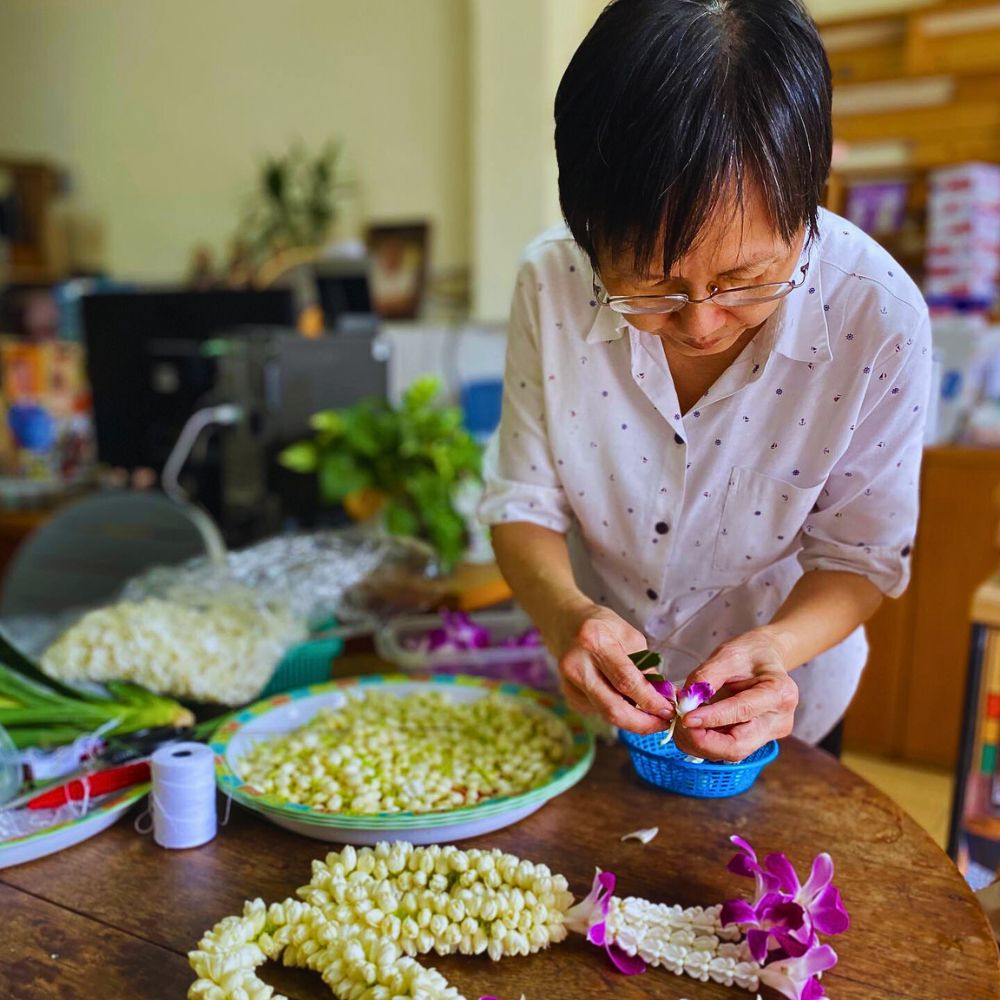
Chained malai consists of a series of rounded garlands linked together, creating a continuous flow that can be draped elegantly over statues, doorways, or worn around the neck. Braided malai weaves two rounded garlands together, often finished with pine-shaped floral decorations at each end, symbolizing unity and continuity. Vine malai mimics the natural growth of flowering vines, with semicircular garlands arranged in a flowing, organic pattern. Laced malai incorporates precious metals like silver and gold threads interwoven with flowers, raising the garland to a ceremonial status reserved for royal or highly auspicious events. Lastly, orchid malai exclusively uses orchids, the national flower of Thailand, celebrated for their subtle beauty and longevity.
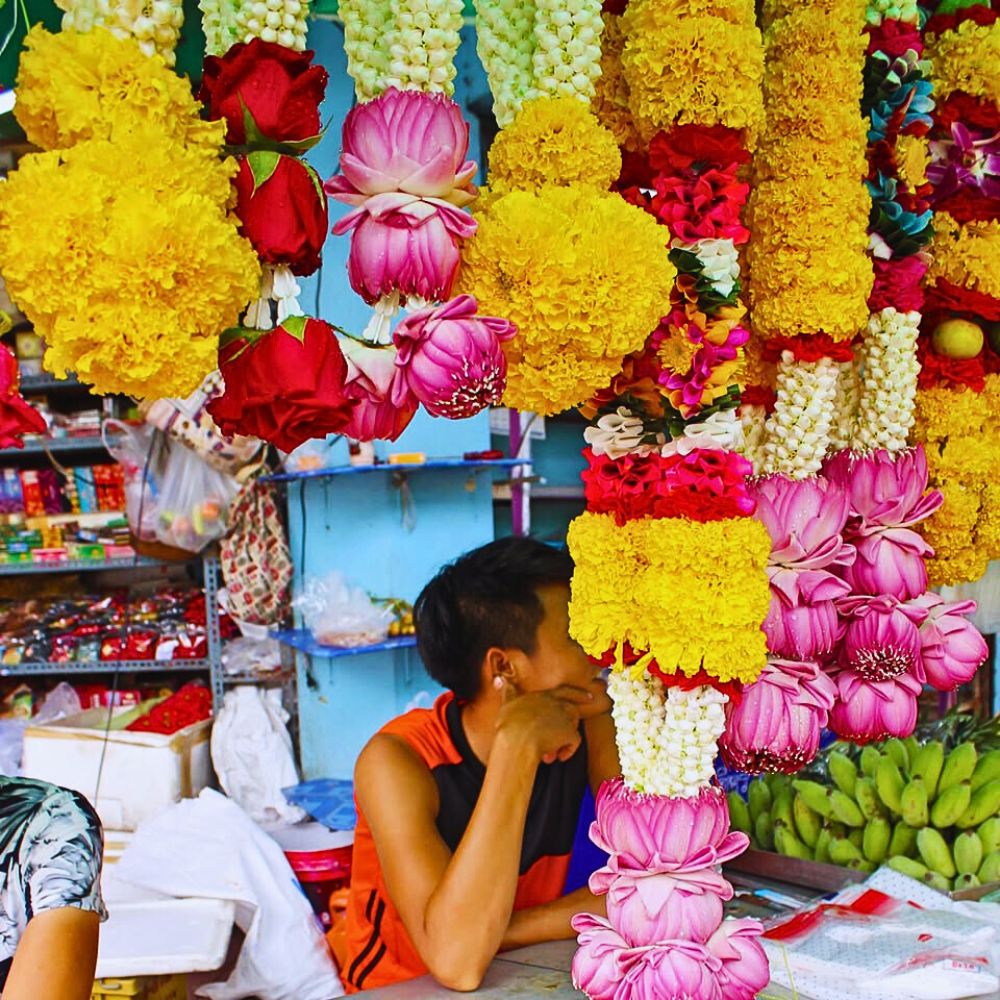
The selection of flowers for Phuang Malai follows ancient principles that assign specific meanings and spiritual properties to different species. Jasmine, known as ‘Dok Mali’ in Thai, is perhaps the most revered flower in these garlands. Its pure white petals symbolize mental purity and spiritual enlightenment, while its fragrance is the sweet essence of Buddhist teachings. Traditional beliefs hold that jasmine possesses the power to attract positive energy and ward off negative influences; thus, it is key in religious rites.
Marigolds, called ‘Dao Rueang' in Thai, contribute their golden colors, representing prosperity, longevity, and the radiance of Buddhist wisdom. These hardy flowers symbolize the persistence of virtue and are particularly favored during festivals celebrating abundance and good fortune. Their bright colors are said to mirror the golden light of enlightenment that emanates from the Buddha. Champaca, known locally as ‘Dok Champa,’ is revered for its golden-yellow hue and heady fragrance. Also called Plumeria or Frangipani, it holds a special place in Buddhist lore as the flower associated with the seventeenth Buddha, Aththadassi. The champaca’s color symbolizes spiritual awakening and enlightenment; thus, it is a favored choice for temple offerings and sacred ceremonies.
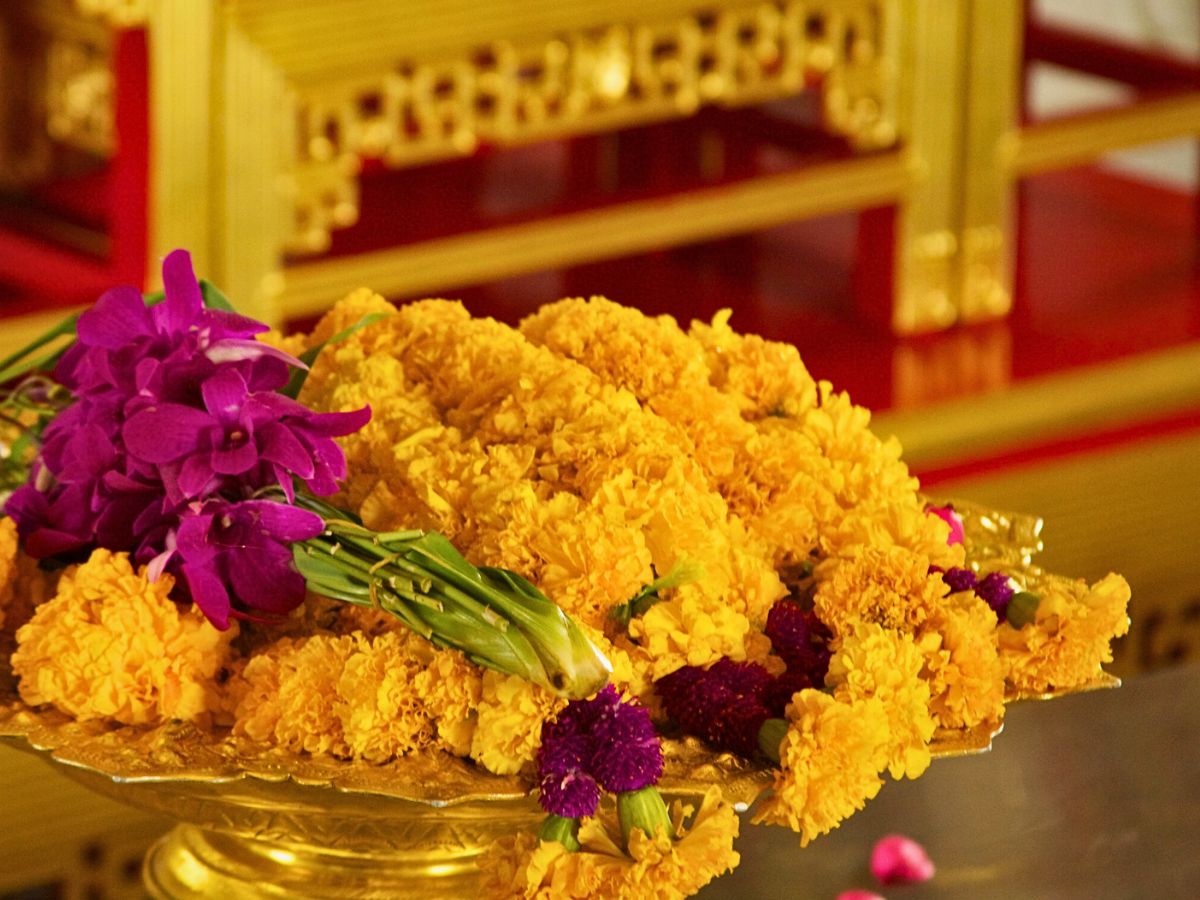

Lotus flowers, though less commonly used due to their delicate nature, hold utmost significance when incorporated into Phuang Malai. The lotus represents the journey from ignorance to enlightenment, as it rises from muddy waters to thrive in pristine beauty. When used in garlands, lotus petals are carefully preserved and positioned to honor the Buddha's teachings about transcendence. Roses, introduced to Thai culture through trade connections, have been adapted into traditional Phuang Malai with meanings that blend Eastern and Western symbolism. Red roses signify passionate devotion to spiritual practice, while white roses echo the purity themes found in jasmine. Yellow roses represent the delight found in Buddhist teachings and the warmth of community.
Orchids, Thailand's national flower, add exotic elegance to special occasion garlands. Their complex structure symbolizes the innate Buddhist philosophy, while their longevity represents the nature of spiritual truth. Different orchid varieties carry specific meanings: purple orchids for wisdom, white for purity, and pink for compassion. The crown flower, ‘Dok Rak,' named for its unique shape resembling a small crown, signifies lasting love and loyalty; thus, it is popular in wedding garlands. Its sturdy structure also lends itself well to garland construction, ensuring the floral arrangement maintains its shape throughout ceremonies.
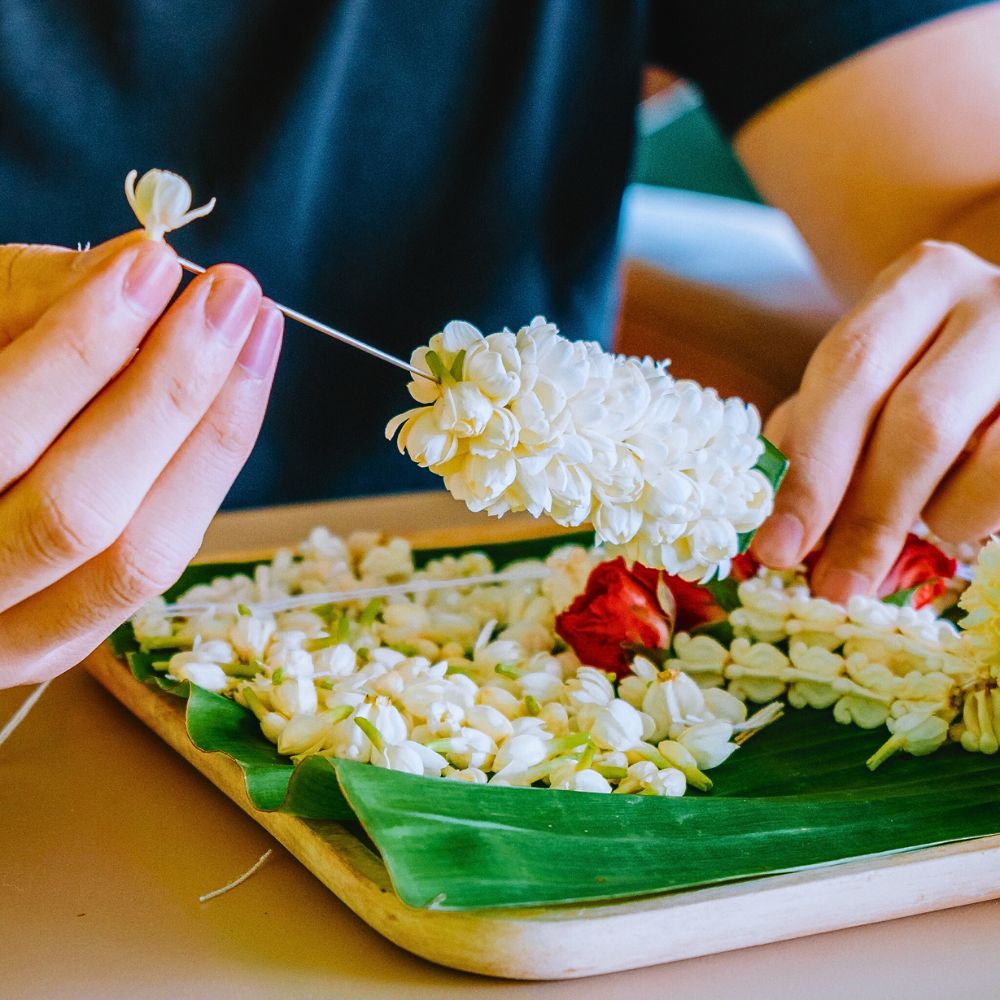
The Art of Their Creation and Craftsmanship
Creating Phuang Malai requires exceptional skill, patience, and spiritual mindfulness. Traditional artisans, often elderly women who have inherited techniques from their mothers and grandmothers, begin their work in the pre-dawn hours when flowers are at their freshest and most fragrant. The stringing technique itself follows ancient patterns passed down through generations. Using thin cotton thread or natural fibers, artisans create various styles: circular garlands for draping over statues or photographs, elongated garlands for wearing around the neck, and complex three-dimensional arrangements for special ceremonies.
Each style requires different threading techniques and flower arrangements that balance aesthetic beauty with spiritual significance. The mental state of the creator is considered crucial to the garland's spiritual effectiveness. Artisans traditionally meditate or recite Buddhist prayers while working, believing that their positive intentions become embedded in the finished product.
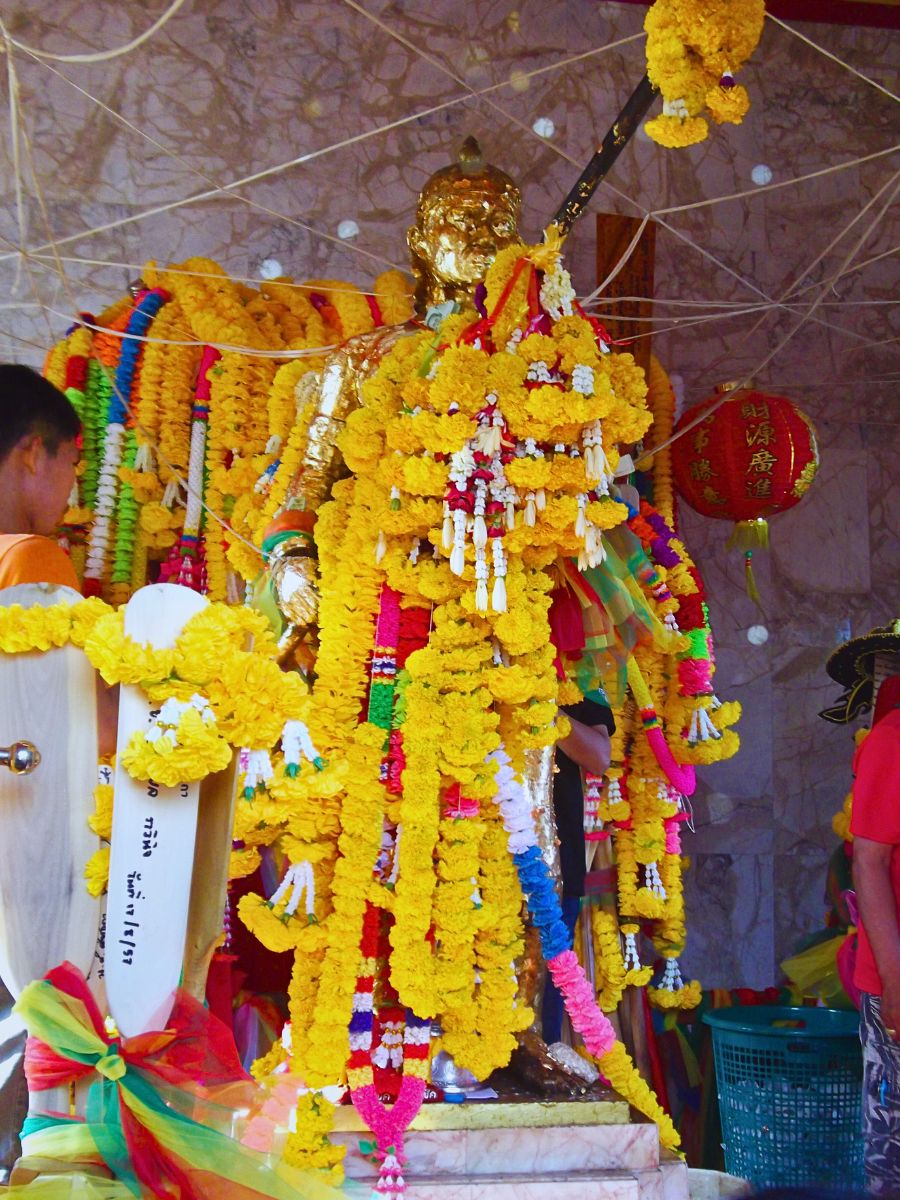
Phuang Malai Uses in Buddhist Festivities and Their Religious Significance
Phuang Malai plays central roles in Thailand's major Buddhist festivals, each occasion demanding specific types and arrangements of garlands. During Vesak Day, also called Buddha Jayanti, Buddha Purnima, Visak Bochea, massive quantities of jasmine and marigold garlands adorn temples throughout the country. Devotees offer these garlands while making merit and seeking blessings for themselves and their families.
The annual Loy Krathong festival showcases elaborate Phuang Malai incorporated into floating offerings released onto waterways. These garlands, combined with candles and incense, carry prayers for forgiveness and purification as they drift downstream. During Songkran, the Thai New Year, Phuang Malai serves multiple ceremonial functions, with families creating special garlands to honor ancestors and seek blessings for the coming year. The garlands are placed at family shrines and later distributed to monks during temple visits as a gesture of respect and blessing, building links between worldly celebrations and spiritual practice. Participants also wear garlands made from jasmine, white champaca, and roses, while also offering them to elders.
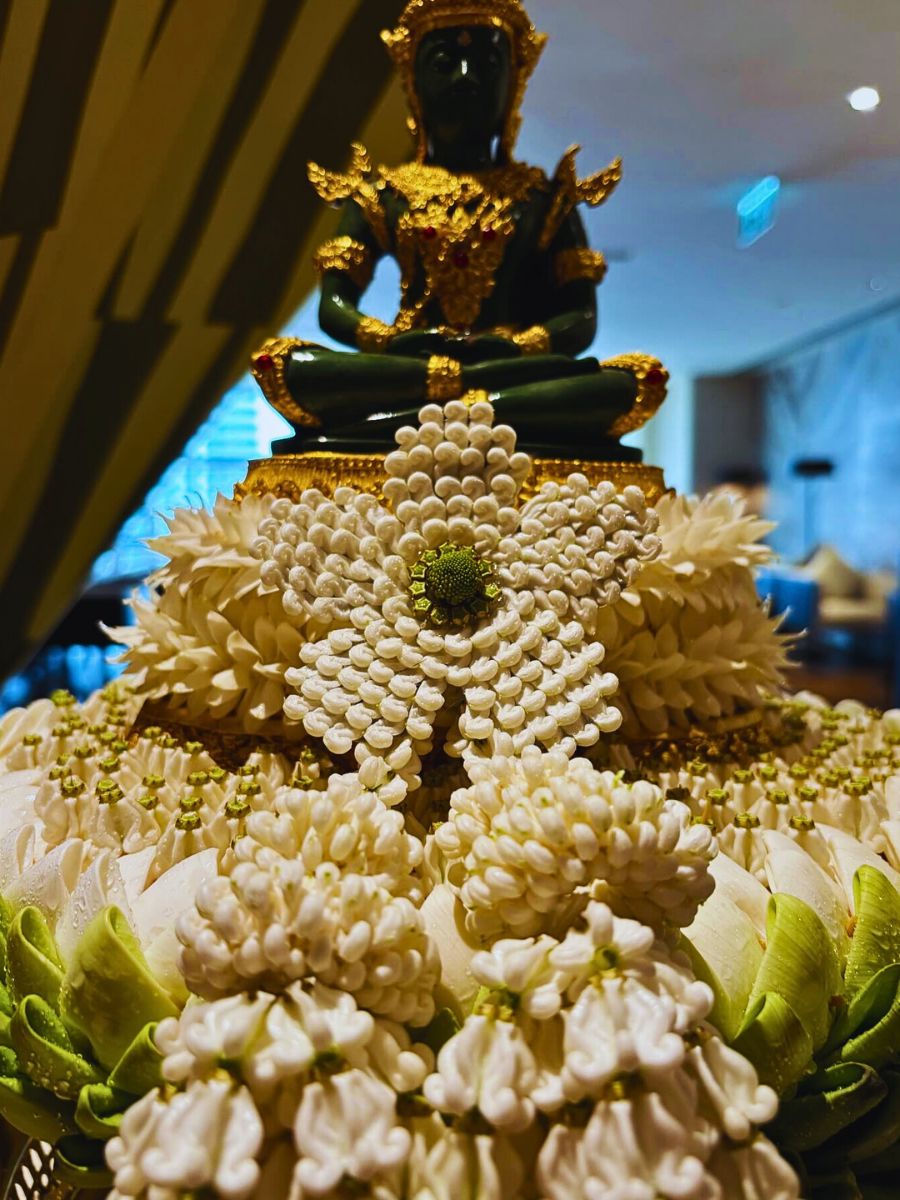
In temple ceremonies, garlands are draped over Buddha statues, spirit houses, and sacred trees, signifying the interconnectedness of all beings and the presence of the divine in everyday life. Still, the act of creating and offering Phuang Malai is itself a form of meditation that nurtures mindfulness.
Wedding Traditions, Matrimonial Symbolism, and Contemporary Relevance
Thai weddings show, perhaps, the most elaborate use of Phuang Malai outside of purely religious contexts. The wedding ceremony begins with the ‘Khan Maak’ procession, where the groom's family carries ornate garlands to the bride's home. These garlands, typically featuring jasmine and roses, symbolize the groom's pure intentions and his family's respect for the bride's lineage. The ‘Sai Mongkol’ ceremony, where a sacred thread is draped over the couple's heads, incorporates specially blessed Phuang Malai that Buddhist monks have consecrated. These garlands remain with the couple throughout the ceremony, symbolizing the spiritual protection surrounding their union.
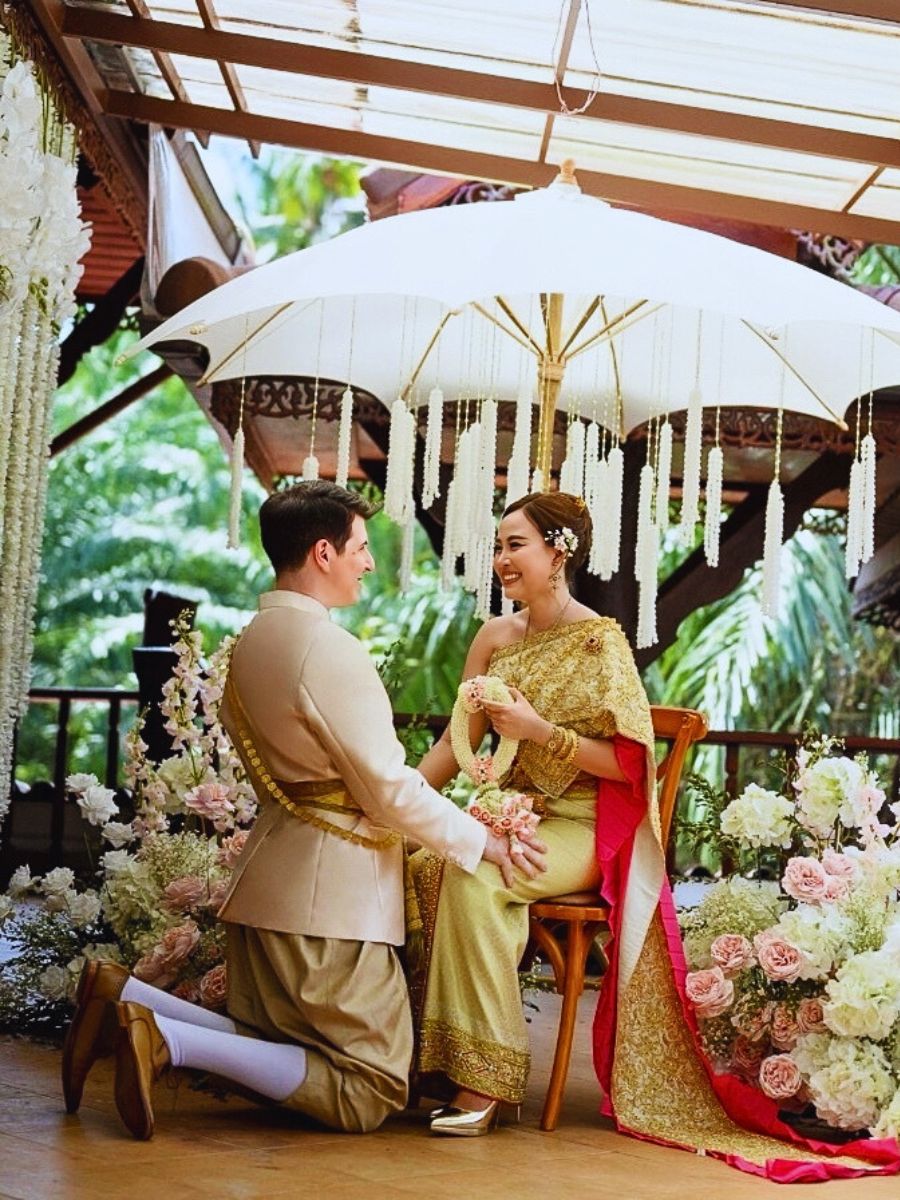
During the ‘Rod Nam Sang’ blessing ceremony, elder family members pour consecrated water over the couple's hands while they hold traditional Phuang Malai. The garlands absorb the blessed water, creating potent talismans that the couple will keep in their new home for protection and prosperity. All these show how these garlands function as both a ceremonial object and a protective charm. After the ceremonies, these garlands often become keepsakes, preserved as souvenirs of the sacred vows and the beauty of the day. The tradition of Phuang Malai in weddings thus captures both the spiritual and emotional dimensions of Thai matrimonial customs.
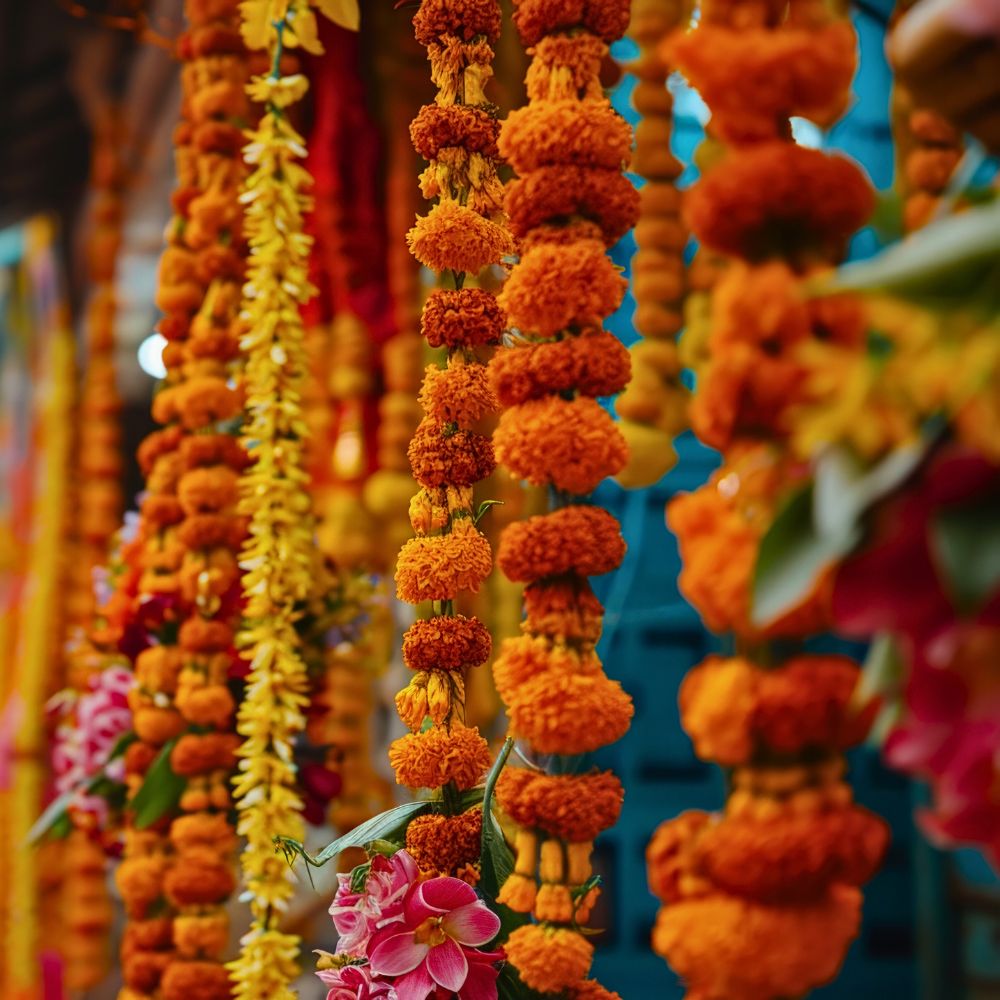
In modern Thailand, Phuang Malai thrives despite urbanization and changing lifestyles. Bangkok's flower markets often bustle with activity as vendors create fresh garlands daily for the city's many temples, shrines, and ceremonies. Young Thai people, even those living abroad, maintain connections to their heritage through Phuang Malai, often requesting specific arrangements for important life events.
Furthermore, modern adaptations, including eco-friendly threading materials and sustainable flower sourcing, are allowing these ancient traditions to evolve while maintaining their spiritual essence. Notably, while the tradition faces challenges from mass production and artificial alternatives, cultural preservation efforts are still strengthening it.
Feature image by @bi__loves__traveling, header image by freepik.

